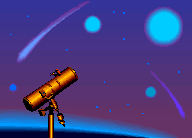
(美国阿拉斯加州播音)
World Christian Broadcasting
Shortwave Radio Station KNLS, Anchor Point, Alaska, USA
Recording Studios: Franklin, Tennessee, USA
|
|
|
"眼见为实"之误 作者:边军辉 我和一位相识多年,但好久没有联络的朋友谈到信仰这个问题。我告诉他:"我是个基督徒,相信神。" 他说:"我总觉得生活中缺少目的,也想有信仰。可你说的神我既看不见又摸不着,如何信他呢?俗话不是说,耳听是虚,眼见为实吗?我只能信科学。" "耳听是虚,眼见为实"原本在以说明人的传闻远不如亲眼看见可靠,是有道理的。可是有人却由此推断,只有人看得见的东西才可信。科学就成了他们的信仰,因为科学是以人的观察为基础的。但是,从科学的历史中我们却不断地看到人的观察力既有限又有误。 古人早就观察到太阳的东升西落,便认为地球静止不动,太阳围着地球转。我们今天都知道“地心说”是错误的。为什麽当时的人看不到地球在运动呢?这是因为人的观察力是有限的。在地球上的人需要有一个地球外的东西作参照物才能察觉到地球的运动。这就象有两列火车并排停在站台上,忽然你坐的那一列火车开动了。你要是只看另一列火车的话,会以为你坐的火车是静止的,另一列火车在运动。但是,只要你拿站台上的人作参照物一同观察,就会发现是你坐的火车在动。人一直等到发明了望远镜才确切地找到了太空中的参照物,察觉到地球围着太阳的运动。可见,观察到的东西不一定是真的,人的观察力受人所在的空间和观察技术的极大限制。
世界上越美妙的东西人越看不到。女儿在六岁的时候送给我一个礼物。当时,我打开盒子一看,是空的,就用诧异地目光望着她。女儿兴奋地说,“爸爸,这盒子里装满了我给你的亲吻。你看见了吗?” “ 看见了。看见了!这是最好的礼物。”说着,我紧紧地把女儿抱在怀里。 朋友,你可曾想过,一个“眼见为实”的世界会多麽贫乏。在那里,黎明的曙光不带来生命的希望,雷雨后的彩虹不意味着和平,那夜空中的明月不再传递恋人间的情爱,人生的意义又在哪里呢?圣经劝告人要凭信心生活,“不注重看得见的东西,而是注重看不见的东西。因为看得见的东西是暂时的,看不见的东西才是永恒的。”(歌林多后书4:18)人生在永恒的神那里才能找到意义。
|
What's Wrong with "Seeing is Believing" By Junhui Bian I talked about the topic of faith with a friend whom I have known for many years, but haven’t communicated with for some time. I told him: " I am a Christian, believing in God." He said, "I often feel the lack of purpose in my life and also want to have faith. However, I can not see and touch the God you spoke of. How can I believe in Him. Didn’t the old saying state, ‘hearing is the fantasy while seeing is the fact’? I, therefore, put my trust in science." The saying "hearing is the fantasy while seeing is the fact" is actually meant to show that what people hear is not as reliable as what people see. It is reasonable. But, some people went further to conclude that only what is seen can be trusted. Thus, science becomes their belief since it is based on human observations. From the history of science however, we learn again and again that human observations were limited or flawed. Ancient people saw the sunrise in the east and the sunset in the west earlier. They concluded that the earth remained still while the sun moves around the earth. Today, we all know that this "earth center theory" is wrong. Why couldn’t ancient people see the movement of the earth then? This is due to the limitation of human observation. People on earth could only detect the movement of the earth when they use an object outside the earth as the reference point. This is just like two trains parked parallel to each other on the platform of the station. You are on one of the trains which suddenly moves. If only looking at the other train, you may feel that your train remains still while the other train is moving. But, if you look using the people on the platform as the reference, you see the train you are riding on is moving. People had to wait until the telescope was invented to find true reference objects on space and saw the movement of the earth around the sun. Thus, what can be seen may not be the fact and human observations are limited greatly by man’s position in space and available techniques for observations. Even when highly developed equipments for observations are available, man only sees without knowing. In early 1609, well-known Italian astronomer Galileo aimed his self-made telescope to the sky. He, a scientist who supported "sun center theory" whole-heartedly and later was persecuted for this by the Roman Catholic Church, saw four satellites of Jupiter. To his puzzlement, the positions of these four satellites changed without any regularity and it seemed impossible to determine their orbits. Galileo never realized that this was the result of his (or earth’s) movement around the sun, missing the great piece of evidence in support of the "sun center theory". In this world, the more beautiful something is, the less people can see it. My daughter presented me a gift when she was six years old. When I opened the box to see the gift, it was empty. I looked at her with confusion. My daughter said with great excitement, "Daddy, this box is filled with my kisses to you. Can you see?" "Yes, I can. I have seen! This is the best present." I put my arms around her tightly. My friends, have you ever thought how poor and empty a seeing-is-believing world would be? In that world, the light of dawn does not bring the hopes of life. The rainbow after the storms does not signify peace. The bright moon in the nightly sky would never deliver the message between the lovers. Where is the meaning of life? The Bible teaches that man should live by faith, and "fix our eyes not on what is seen, but on what is unseen. For what is seen is temporary, but what is unseen is eternal." (2 Corinthians 4:18) Man must seek the meaning of his life in the eternal God.
|
 既使有了发达的观测仪器,人也会见物而不识物。在一六零九年初,著名的意大利天文学家伽利略将自制的望远镜第一次瞄向太空。这位坚定地支持“日心说”并后来为此受到罗马天主教会迫害的科学家,发现了木星的四颗卫星。令伽利略感到困惑的是,这四颗卫星的位置变化无常,它们的运行轨道似乎无法判定。他没有意识到这正是他所在的地球绕太阳运动的结果,就此错过了这一支持“日心说”的有力证据。
既使有了发达的观测仪器,人也会见物而不识物。在一六零九年初,著名的意大利天文学家伽利略将自制的望远镜第一次瞄向太空。这位坚定地支持“日心说”并后来为此受到罗马天主教会迫害的科学家,发现了木星的四颗卫星。令伽利略感到困惑的是,这四颗卫星的位置变化无常,它们的运行轨道似乎无法判定。他没有意识到这正是他所在的地球绕太阳运动的结果,就此错过了这一支持“日心说”的有力证据。